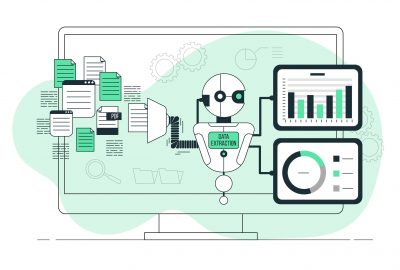In the vibrant world of business and digital transformation, there’s a story that needs to be told. A story of wisdom gained through over a decade of navigating the ever-changing landscape of process automation. It’s a tale of trials and triumphs that can guide any business leader looking to embark on a journey of digital metamorphosis.
Choosing the right solution
Our journey begins with the realization that selecting the most complex business process as the starting point for a digital transformation project is a perilous path. We’ve seen it time and again during our years of implementing process automation solutions for small, mid-sized, and large enterprises.
These projects typically kick off with the desire for enhanced efficiency, productivity, or business improvement. This sparks a mandate from the decision-makers to find a solution, and the technology and procurement teams are set into motion to contact vendors and make a selection. The narrative, however, often takes a different turn once the sales pitches begin.
Demos, as we’ve observed, are well-rehearsed plays following a predefined script. Some customers, wary of the salesmanship, ask for proof of concept (PoC). But here’s where things get tricky. The catch-22 emerges: solutions genuinely suited for the task may not offer a PoC at no cost, while customers are reluctant to fund PoCs for multiple vendors. It all hinges on how much the vendor desires the business.
Even if a PoC is successful, it doesn’t guarantee future success. This is where complexity enters the scene. Many clients opt for the most intricate processes, mistakenly thinking that if the solution works for these, it will work for everything else. The reality, as we’ve learned, is quite different. Specialized solutions excel in a niche but may not be suitable for a broader range of processes.
So, we propose a shift in perspective. The initial phase of a digital transformation project should concentrate on the core capabilities of the solution, addressing common process automation requirements such as integration, design, change management, deployment, security, permissions, ease of configuration, and user-friendliness.
But that’s a topic for another blog post. Once the dust settles, and an OEM emerges victorious, the grueling negotiation phase begins, leading to the final selection of a solution.
Choosing the right implementation approach
By this point, you might be feeling the exhaustion setting in, but the true litmus test for success is just beginning: implementation. At this juncture, businesses must decide whether to adopt a DIY (Do-it-Yourself) or DIFM (Do-it-For-Me) approach. However, there’s a third way, a hybrid approach we highly recommend: DIT (Do-it-Together). In this model, the customer and the implementation consultant collaborate on the initial delivery, enabling knowledge transfer and streamlining the implementation process.
Choosing the right process to automate
Now, to the crux of the matter. We’ve observed that, when selecting the first set of processes for automation in the initial project phase, customers tend to opt for their most complex processes. The question naturally arises: why?
There are several reasons for this choice. Some believe that by tackling the most complex process first, they can demonstrate the solution’s versatility for other processes. This logic seems sound – after all, if you can handle an elephant, a rabbit should be a walk in the park, right? Experience, however, has shown that this isn’t always the case.

Budget constraints also play a role. Clients often want to allocate their budget to solve the most complex problem upfront, ensuring that, even if funds run low, they’ve addressed the “elephant in the room.”
Another reason for selecting complex processes is to leverage the experience and skills of the implementation consultant. Their internal teams can then handle the simpler processes.
Yet, this isn’t the wisest approach. Complex processes are intricate for a reason. They can take a significant amount of time to build and involve numerous stakeholders, which can slow down decision-making.
In some instances, seemingly simple processes evolve into complex ones over time as workarounds are added to compensate for limitations in the current system.
The end result? Delays in project delivery, and the initial momentum for digital transformation wanes. New priorities arise, resources are reallocated, and the promised pot of gold at the end of the rainbow remains elusive. This HBR article provides a useful framework for choosing the right process to automate.
Set your digital transformation project up for success
So, what’s the better approach? We recommend starting with quick wins – processes that impact a wide range of users, have few decision makers, and are straightforward. This strategy immediately demonstrates value and allows users to engage with the new solution early on.
These initial victories pave the way for the breakdown of complex processes into simpler ones, optimizing the use of the new solution’s capabilities. Without these early proof points, gathering requirements and redesigning processes for the new platform can be an uphill battle.
In our experience, breaking down complex processes into simpler ones, and gradually adding features over time, leads to a more efficient digital transformation. The core process often addresses over 90% of use cases, with the remaining 10% being added as needed.
This approach requires thorough consideration when choosing the right technology, but also when selecting the team and talent for your digital transformation projects. The right partners and the right processes are equally as vital, if not more so, than the technology itself.
Whether you’re at the stage of choosing technology, implementing it, or managing it post-implementation, remember that success in your digital transformation journey is a culmination of several factors. It’s a story that begins with the right approach, the right processes, and the right partners. And it’s a story we’re here to help you write, with the promise of a successful ending to your digital transformation project. Talk to us today!
Image by standret on Freepik





